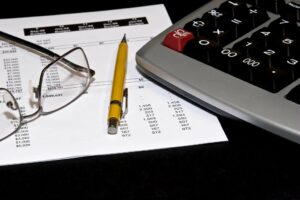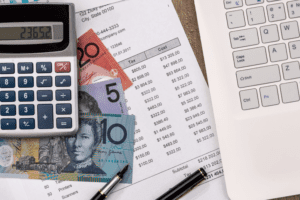
The other side of the depreciation expense is a credit entry to the accumulated https://www.odontoledo.com/income-statement-definition-example-structure-and/ depreciation account. The cost of an asset normally comprises depreciation and repairs and maintenance. This application of the fixed rate to the declining book value results in higher depreciation expenses in earlier years and lower expenses as the asset ages. This differs from the straight-line method, which allocates an equal amount of depreciation each year. The example demonstrates the core mechanics before considering salvage value limits or method switches. Discover how to apply the double declining balance method for accelerated asset depreciation.

Use of Double-Declining-Balance on Financial Statements
- The double declining balance (DDB) method is a straightforward process that applies an accelerated depreciation formula to assets.
- Generally Accepted Accounting Principles (GAAP) allow for various depreciation methods, including DDB, as long as they provide a systematic and rational allocation of the cost of an asset over its useful life.
- The double-declining-balance method is also used for tax considerations in the early years and balancing asset maintenance costs in later years.
- In the final years, businesses must adjust calculations to ensure the book value aligns with the salvage value at the end of the asset’s useful life.
- Common mistakes in applying this formula include overlooking the correct book value, underestimating or overestimating the asset’s useful life, and failing to account for salvage value limits.
This systematic allocation aligns with the matching principle, recognizing expenses in the same period as the revenues they help generate. The double declining balance (DDB) method is an accelerated depreciation technique, allowing larger depreciation expenses in earlier years and smaller expenses in later years. This can be particularly beneficial for assets that lose value quickly or are more productive in their initial years. The latter two are considered accelerated depreciation methods because they can be used by a company to claim greater depreciation expense in the early years of the asset’s useful life. At the end of an asset’s useful life, the total accumulated depreciation adds up to the same amount under all depreciation methods. Accumulated depreciation is the sum of all previous years’ depreciation expenses taken over the life of an asset.

Practical Applications of the DDB Method

Once the asset is valued on the company’s books at its salvage value, it is considered fully depreciated and cannot be depreciated any further. However, if the company later goes on to sell that asset for more than its value on the company’s books, it must pay taxes on the difference as a capital gain. What it paid to acquire the asset — to some ultimate salvage value over a set period Bookkeeping for Startups of years (considered the useful life of the asset).
Key Components for Calculation
- When the straight-line method is used each full year’s depreciation expense will be the same amount.
- This accelerated approach better matches the real-world decline in an asset’s value, especially for items that lose their utility faster.
- Therefore, deferring tax payments to later years can lead to cost savings for the company.
- However, in the units-of-activity method (and in the similar units-of-production method), an asset’s estimated useful life is expressed in units of output.
- The “double” means 200% of the straight line rate of depreciation, while the “declining balance” refers to the asset’s book value or carrying value at the beginning of the accounting period.
- While straight-line depreciation rates offer more stable expense reporting, the double-declining balance method takes a more detailed—and often realistic—view.
Save time with automated accounting—ideal for individuals and small businesses. We now have the necessary inputs to build our accelerated depreciation schedule. Learn how to build, read, and use financial statements for your business so you can make more informed decisions. And the book value at the end of the second year would be $3,600 double declining balance depreciation ($6,000 – $2,400). This cycle continues until the book value reaches its estimated salvage value or zero, at which point no further depreciation is recorded.
- For instance, if an asset has a life of five years, the sum of the years’ digits would be 15 (5+4+3+2+1).
- The double declining balance method of depreciation, also known as the 200% declining balance method of depreciation, is a form of accelerated depreciation.
- At Taxfyle, we connect individuals and small businesses with licensed, experienced CPAs or EAs in the US.
- For example, a company that owns an asset with a useful life of five years will multiply the depreciable base by 5/15 in year 1, 4/15 in year 2, 3/15 in year 3, 2/15 in year 4, and 1/15 in year 5.
- One of the main financial statements (along with the statement of comprehensive income, balance sheet, statement of cash flows, and statement of stockholders’ equity).
- For example net sales is gross sales minus the sales returns, the sales allowances, and the sales discounts.

Depreciation stops when the asset’s book value reaches its estimated salvage value, even if the declining balance calculation would yield a higher depreciation amount. For subsequent years, the depreciation calculation shifts to using the asset’s beginning-of-year book value. The DDB rate is applied to this reduced book value, resulting in a decreasing depreciation expense each year. This process continues annually, with depreciation for each year being the DDB rate multiplied by the book value at the start of that year.

